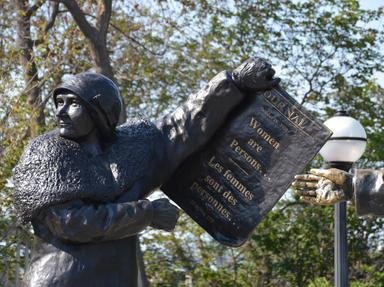Quiz Answer Key and Fun Facts
1. Writer, editor, abolitionist who authored the Declaration of Sentiments for the Seneca Falls Convention (1848), which made the First Wave go tidal!
2. Co-founder and president of the National Woman Suffrage Association. Attempted to vote for President of the USA on November 5, 1872.
3. Never mind voting, this lady *ran* for President of the USA (and advocated free love, besides).
4. A Quaker minister and founder of the Philadelphia Female Anti-Slavery Society, and a major player at the Seneca Falls Convention.
5. Founded the Federation of French Feminist Societies in 1892. Also claimed, perhaps not entirely accurately, to have coined the very word feminism ('féminisme' in French).
6. Leader of not one, but two organizations over 100 years old! President of the Women's Christian Temperance Union (WCTU), which spread from the USA to Canada, Australia, Sweden, etc. Also organized the Prohibition Party, the first to allow women as members.
7. New Zealand's most famous WCTU leader and suffragist, who appeared on the 10-dollar note.
8. A suffragette who founded the radical Women's Social and Political Union (WSPU) to fight for women's enfranchisement in the UK, and made the First Wave a tsunami with vigorous protest.
9. A British intellectual and suffragist, unconventional but non-violent. Co-founded a college and led an umbrella organization of women's suffrage societies. Also investigated concentration camps in post-Boer War South Africa.
10. Helped create a fund for women's higher education in Russia and organized the All-Women's Congress of 1908.
Source: Author
gracious1
This quiz was reviewed by FunTrivia editor
bloomsby before going online.
Any errors found in FunTrivia content are routinely corrected through our feedback system.
